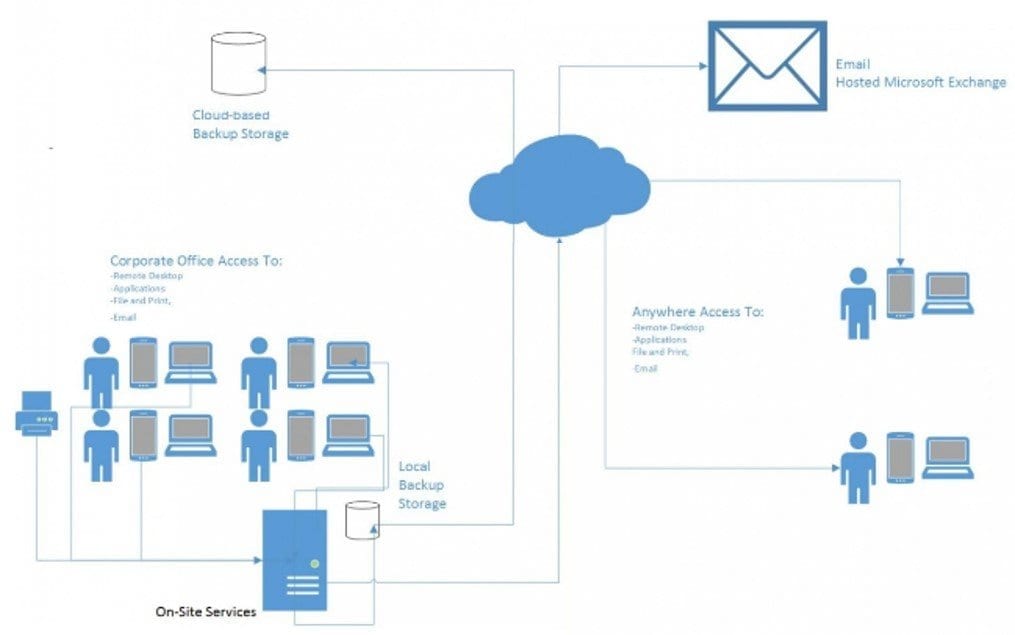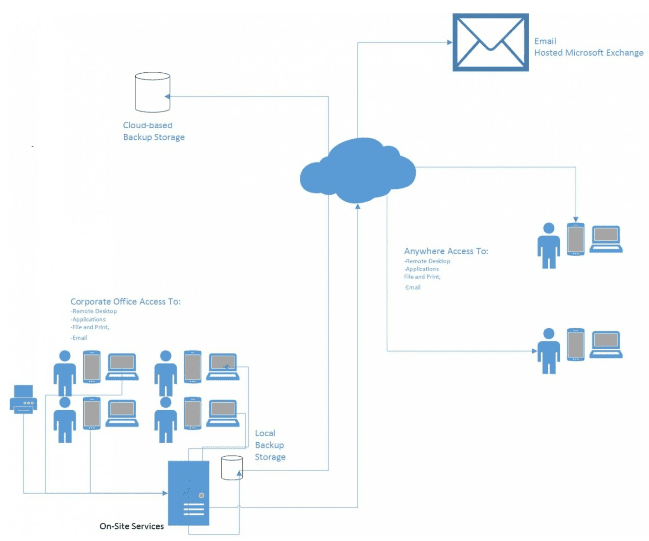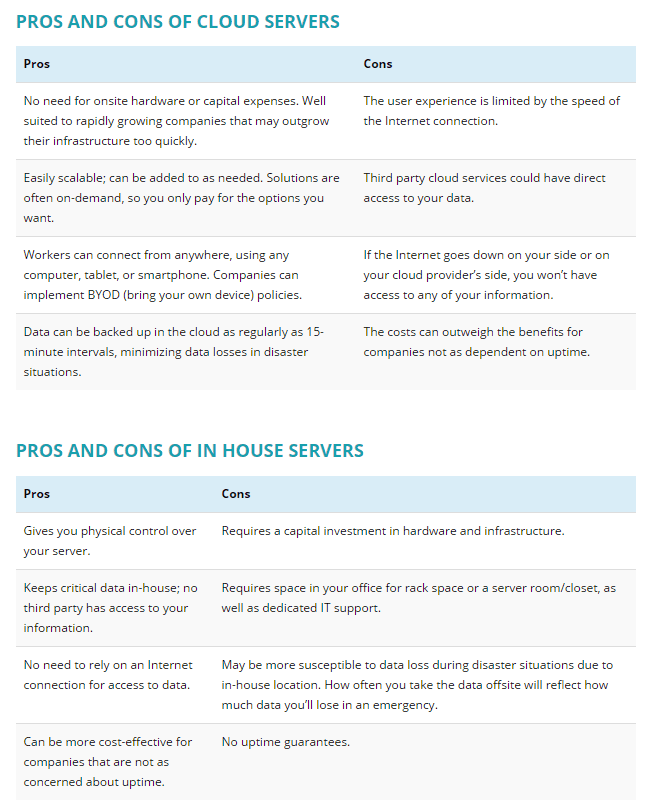
Cloud-Based vs. On-Premises Exchange Server
In attempting to assist a client walking through the Exchange Decom for their hybrid environment. I came across some utilities that assisted in reviewing the pros and cons of using a hybrid, cloud-based, or on-premises Exchange Server.
Overall, I found that having an Exchange Server on-site is the best practice per Microsoft in a hybrid Office 365 environment. It is the best practice for two main reasons. The first is that the Exchange Server acts as an SMTP relay for any internal applications or devices that need to send email. Applications/devices can only go direct to Office 365 if they support authentication and encryption. Most applications/devices do not support these two functions, so they need something to relay mail that can support these two options. An on-premises server meets these requirements. The second reason for having an on-site Exchange server is for management. The Exchange server allows you to perform user adds/changes/deletes without needing to use Powershell or ADSIEdit.
Hybrid Exchange Servers
Overall, it is recommended to have a hybrid model. Going hybrid gives clients the best of both worlds. Having some in-house server hardware can be suitable for companies that do not want to rely on the Internet, and at the same time, businesses can reap the benefits of a cloud solution, such as Microsoft Exchange email, to allow users to connect from anywhere with a high degree of uptime.
 The hybrid model seems to be on trend with what’s happening in the IT industry in general. According to a recent Wall Street Journal article, tech’s future may lie in the “fog” rather than the cloud. In other words, cloud solutions are great, but businesses may not want to have everything “out there” in the cloud. Some solutions will still need to be kept in house or on device, closer to the ground. For many companies, the best configuration will be somewhere in between, which the article refers to as “the fog.”
The hybrid model seems to be on trend with what’s happening in the IT industry in general. According to a recent Wall Street Journal article, tech’s future may lie in the “fog” rather than the cloud. In other words, cloud solutions are great, but businesses may not want to have everything “out there” in the cloud. Some solutions will still need to be kept in house or on device, closer to the ground. For many companies, the best configuration will be somewhere in between, which the article refers to as “the fog.”
Beth Zange-Sellers, PEI





